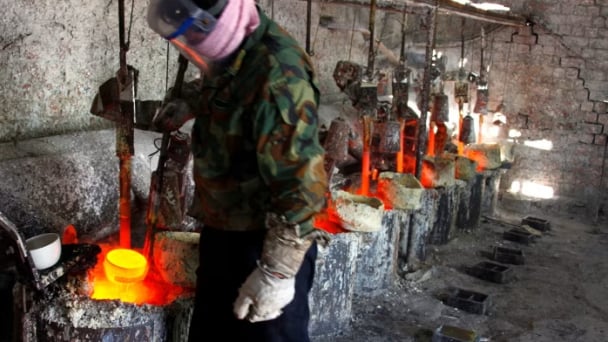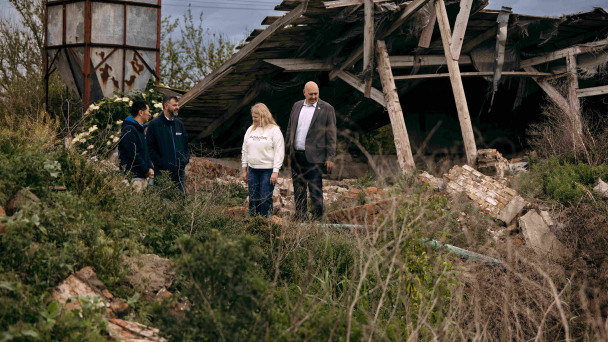June 18, 2025 | 10:26 GMT +7
June 18, 2025 | 10:26 GMT +7
Hotline: 0913.378.918
June 18, 2025 | 10:26 GMT +7
Hotline: 0913.378.918

Pakistan produces rice and sugar in surplus quantity, which is more than the domestic requirement. Photo: Tribune
A significant part of the non-basmati rice crop has been damaged owing to the recent floods. In contrast, the basmati rice crop is standing intact.
“The rice sowing target for the current Kharif season was set on 1.8 million acres. During the months of April, May and till the mid of June, farmers in Sindh, in particular those in the rice belt, faced acute water shortage,” said Sindh Chamber of Agriculture (SCA) President, Miran Mohammed Shah.
“Owing to the water shortage, the rice nurseries could not be prepared in most of the areas,” he added.
The SCA president explained that “rice nurseries were prepared on a very small scale, only in those areas where water was available. By the end of June, rice was sown in only half of the targeted areas. The current rains started from the first week of July which continued till August 20, 2022. During those 50 plus rainy days, 65-70% of the rice nurseries were washed away in severely rain affected areas. In the remaining areas, 40-45% damage was done to the standing rice crops.”
Bayer Agri Grower Marketing Lead, Azeem Khan Niazi stated that “the rice area in general was impacted more by the heat spell, water shortage and load shedding before the monsoons arrived, particularly in Sindh.”
The SCA president noted that the “rice crop had been damaged by up to 55-60% across Sindh”.
“Pakistan exports approximately $2 billion worth of rice, of which 70% is coarse variety (IRRI-6 and 8), and 80% of the IRRI-6 variety is sown in Sindh. Thus, Sindh is the major contributor to the big quantity of rice exported,” Shah added.
“Due to the huge losses to the rice crop, the country will definitely not export the commodity at such a large scale as it used to do in previous years,” he further added.
“The damage was due to monsoon, flow of water from Indus Tributaries and the Kabul River,” said Agriculture Republic Co-founder, Aamer Hayat Bhandara.
“In Balochistan, rice is cultivated in the districts of Dera Bugti, Naseerabad and Jaffarabad. Approximately, 280,000 acres of land and 310,000 tons of rice have been damaged which is valued at Rs28 billion,” he further explained.
In Khyber Pakhtunkhwa, Swat and Dera Ismail Khan, 150,000 acres and 175,000 tons of rice have been damaged which is valued at Rs12 billion. In Sindh, 24% of the rice is grown in Thatta and Badin while 60% is grown in Kashmore, Shikarpur, Larkana and Shahdad Kot. Likewise, 16% is grown on the left Bank of the Indus in Ghotki, Khairpur and Sanghar. Out of this, 5% area of lower Sindh and 27% area of Dadu and Shahdad Kot, an estimated 310,000 acres, has been damaged by floods. The loss of rice totals 560,000 tons, which is valued at Rs44 billion.
The rice damage in total across Pakistan amounts to 860,000 acres and equals 1,155,000 tons. The total value of losses adds up to Rs 91 billion.
“If there had been no floods, then the total production would have amounted to 9.2 million tons valued at Rs810 billion,” explained Bhandara. However, the expected rice production after the flood damages stands at 8.1 million tons, he added.
“Domestic consumption is 4.2 million tons while the expected production loss stands at 1.1 million tons. Likewise, the expected export loss is 700,000 tons,” said Bhandara.
“Despite the floods, we do not need to import rice at all. Even after the damages and fulfilling the domestic need of 4.2 million tons, we will have over four million tons to export,” exclaimed Bhandara.
(Tribune.com)

(VAN) Extensive licensing requirements raise concerns about intellectual property theft.

(VAN) As of Friday, a salmonella outbreak linked to a California egg producer had sickened at least 79 people. Of the infected people, 21 hospitalizations were reported, U.S. health officials said.

(VAN) With the war ongoing, many Ukrainian farmers and rural farming families face limited access to their land due to mines and lack the financial resources to purchase needed agricultural inputs.

(VAN) Vikas Rambal has quietly built a $5 billion business empire in manufacturing, property and solar, and catapulted onto the Rich List.

(VAN) Available cropland now at less than five percent, according to latest geospatial assessment from FAO and UNOSAT.

(VAN) Alt Carbon has raised $12 million in a seed round as it plans to scale its carbon dioxide removal work in the South Asian nation.

(VAN) Attempts to bring down the price of the Japanese staple have had little effect amid a cost-of-living crisis.